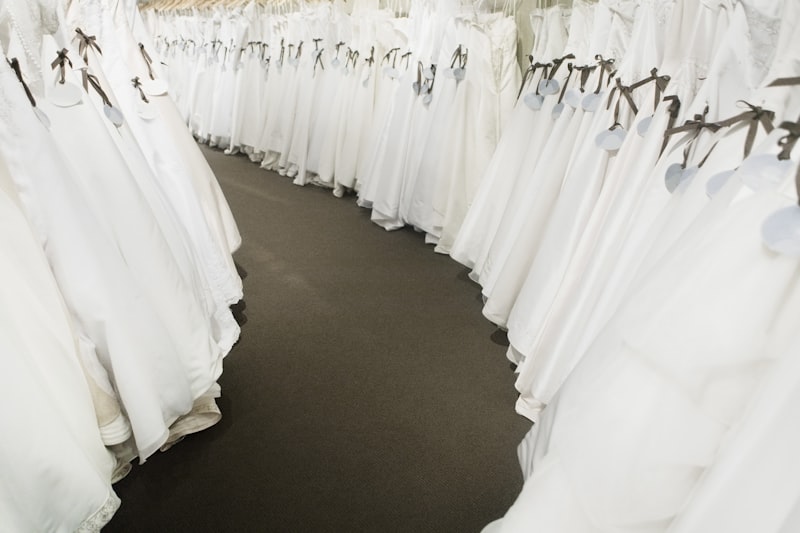Ultimate Guide to Wedding Dress Prototyping and Sampling
Ultimate Guide to Wedding Dress Prototyping and Sampling
Understanding Wedding Dress Prototyping and Sampling
In the world of bridal fashion, the journey from a designer's imagination to a beautiful wedding dress involves various crucial steps. Among these, wedding dress prototyping and sampling play a significant role. This process ensures that the final product reflects the designer's vision while meeting the bride's expectations. In this guide, we will explore the intricacies of prototyping and sampling in wedding dress design, including its significance, methodologies, and practical tips for designers.
The Importance of Prototyping and Sampling
The prototyping and sampling phases in wedding dress design are vital for several reasons:
- Validation of Design Concepts: Prototypes allow designers to visualize their ideas in a tangible form, making it easier to identify potential flaws before the final creation.
- Fitting and Adjustments: Sampling is critical for ensuring the dress fits well. Brides often have specific body shapes and measurements that need to be considered during this phase.
- Fabric and Material Testing: Prototypes enable designers to test different fabrics and materials, ensuring they achieve the desired look and feel.
- Budget Management: By identifying design flaws early on, designers can save on costs that might arise from last-minute changes.
Steps in the Wedding Dress Prototyping Process
The wedding dress prototyping process can be broken down into several key steps:
| Step | Details |
| Concept Development | Brainstorming design ideas, sketches, and inspiration boards to set a vision for the dress. |
| Fabric Selection | Choosing appropriate materials based on aesthetics, comfort, and functionality. |
| Create a Basic Pattern | Drafting a pattern based on the design concept to use as the foundation for the dress. |
| First Prototype | Creating a first version of the dress, often in inexpensive fabric to test the design. |
| Fit and Adjustments | Conducting fittings with the intended wearer to identify necessary changes. |
| Final Sampling | Producing a refined sample with the selected fabric, ready for presentation or further adjustments. |
Choosing the Right Materials
When prototyping wedding dresses, the choice of materials can significantly influence the look and feel of the final product. Commonly used fabrics include:
- Silk: Known for its luxurious drape and sheen, silk is a popular choice for bridal gowns.
- Tulle: Often used for skirts, tulle adds volume and a dreamy quality to wedding dresses.
- Lace: A classic element, lace can bring intricate detail and a romantic touch to any bridal design.
- Chiffon: Light and flowing, chiffon offers a delicate appearance and is perfect for layering.

Sample Fitting: A Crucial Step
Once the initial prototype is created, sample fitting becomes essential. This phase involves practical considerations beyond aesthetics:
- Body Shape Variations: Recognizing that brides come in all shapes and sizes, each dress must be tailored for the specific figure.
- Comfort Factor: Brides will wear their dresses for hours, making comfort a top priority.
- Functionality: Considerations such as ease of movement and accessibility (e.g., restroom visits) should be addressed.
Addressing Common Concerns in Prototyping
Designers often face various challenges during the prototyping process. Below are a few common concerns, along with useful tips to overcome them:
- Budget Constraints: Use less expensive fabrics for the initial prototypes. This approach minimizes costs while still allowing for a tangible representation of the design.
- Time Management: Create a detailed schedule to allocate adequate time for each phase of prototyping and sampling. This prevents delays in the overall design process.
- Client Expectations: Maintain open communication with the bride. Regular updates and insights into the design process help manage expectations and foster collaboration.
Finalizing the Wedding Dress
Once all adjustments have been made and the final sample is completed, it's time for the production phase. As part of this stage:
- Quality Control: Conduct thorough checks to ensure that the finished dress meets all design specifications and quality standards.
- Package and Deliver: A beautifully presented dress can elevate the overall experience for the bride.
Conclusion: Keys to Successful Wedding Dress Prototyping and Sampling
In conclusion, wedding dress prototyping and sampling are critical to creating a well-designed, beautiful garment that meets the bride's desires and expectations. By effectively managing each step in the process while maintaining open communication with clients, designers can navigate challenges and deliver outstanding results. It is essential to choose the right materials, pay attention to fit, and conduct comprehensive fittings. Following these guidelines ensures a stunning wedding dress ready for the big day.
Final Tips and Recommendations
- Always keep the bride's vision in mind.
- Be open to feedback and willing to make adjustments.
- Invest time in choosing the right fabric and details; this will pay off in the final design.
- Document each phase to track progress and refine the process for future designs.
